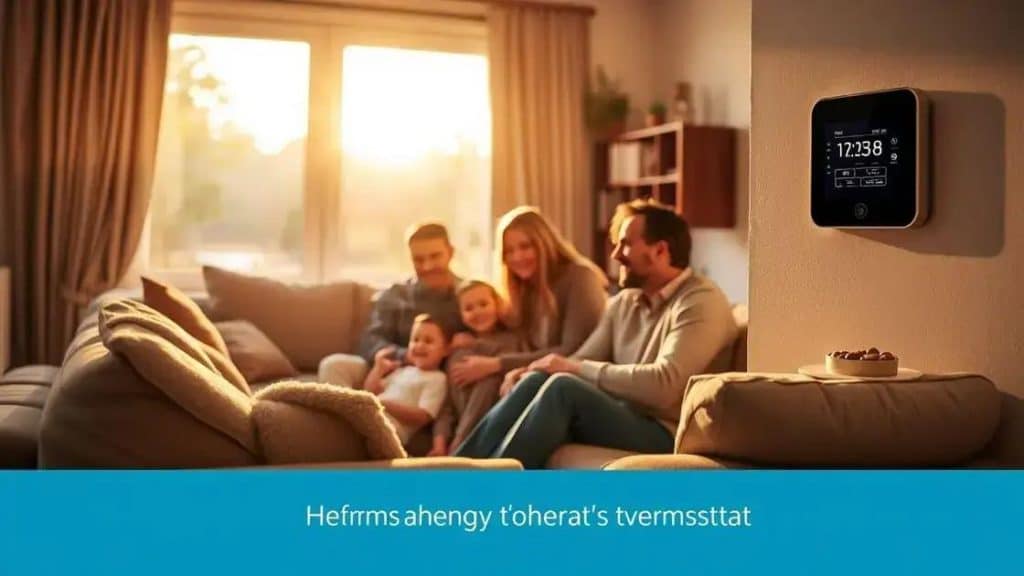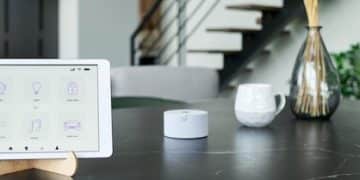Smart home safety systems for families in the US

Smart home safety systems for families in the US provide enhanced security, convenience, and automation, allowing real-time monitoring and remote access to protect loved ones and property effectively.
Smart home safety systems for families in the US can transform how we think about security and convenience at home. Have you ever wondered how technology can enhance your family’s safety? Let’s dive into the many options available.
Understanding smart home safety systems
Understanding smart home safety systems is essential for families who want to enhance their home security. These systems integrate technology to protect your loved ones and property effectively. But what exactly do these systems entail? Let’s delve into the components and their benefits.
Key Components of Smart Home Safety Systems
Smart home safety systems comprise various elements that work together to provide comprehensive protection. Here are some key components:
- Smart Security Cameras: Monitor your property in real-time and receive alerts on your smartphone.
- Smart Alarms: Notify you of any unusual activities or breaches in security.
- Smart Door Locks: Allow remote locking and unlocking, giving you control over who can enter your home.
- Motion Sensors: Detect movement and can trigger alarms or notifications.
By integrating these components, families can ensure their safety is a top priority. The technology provides peace of mind, allowing parents to focus on daily tasks without constantly worrying about security.
How Smart Home Safety Systems Enhance Security
Smart home safety systems come with numerous advantages that enhance the security of your home. Firstly, they can be monitored in real-time from anywhere, ensuring constant vigilance. Secondly, many systems learn your patterns and adjust notifications accordingly. For example, if you usually leave home at the same time, the system can minimize alerts that are not relevant during that hour.
The integration of voice control also makes these systems user-friendly. Imagine being able to manage your entire home security with simple voice commands. This feature is particularly useful when your hands are full or when you’re away from the house yet need to check in.
Not only do smart home systems provide tangible safety benefits, but they can also lead to reduced insurance premiums. Many insurance companies offer discounts to homeowners with security systems installed, recognizing the reduced risk of burglary or damage.
Top benefits for families

Understanding the top benefits for families using smart home safety systems can greatly enhance their everyday lives. These systems not only protect homes but also foster a sense of security among family members. With so many options available, it’s essential to know what advantages these technologies can offer.
Enhanced Security
One of the primary benefits is enhanced security. Families can monitor their homes remotely, ensuring safety from anywhere, at any time. Whether through a smartphone app or computer, you can keep an eye on your property.
- Instant Notifications: Receive real-time alerts about suspicious activities.
- Remote Access: Control devices like locks and cameras from your phone.
- Video Surveillance: View live feeds from security cameras and ensure the safety of family members.
Moreover, having a visual record can help in case of emergencies or thefts, contributing to family peace of mind.
Convenience and Automation
Smart home safety systems also provide significant convenience. Automatic systems allow you to set schedules for lights, locks, and alarms. Imagine being able to automate your home as you prepare for bed or when you leave for vacation. This level of automation simplifies daily routines for families.
Additionally, many systems work with voice commands. This hands-free operation is especially beneficial for parents juggling multiple tasks at once. With smart devices, families can enjoy a seamless integration of security and convenience.
In terms of ease of use, most platforms are designed with user-friendliness in mind. Families can easily navigate their applications, making it accessible to everyone, regardless of tech-savvy skills.
How to choose the right system
Choosing the right smart home safety system can seem overwhelming due to the many options available. However, understanding what to consider will help families select the best system for their needs. It’s important to look at factors like budget, features, and compatibility.
Assess Your Needs
The first step is to assess your family’s unique needs. Consider the size of your home and which areas need monitoring. Do you have children or pets? Identifying specific concerns will help narrow down your choices effectively.
- Family Size: Larger families may need more cameras and sensors.
- Home Layout: Complex layouts might require more equipment to ensure full coverage.
- Specific Concerns: Think about targeted security issues, such as home invasions or fire safety.
Every family is different, and understanding your situation will lead to a more suitable choice.
Evaluate Features and Technology
Next, evaluate the features offered by different systems. Modern smart home safety systems come equipped with various technology options, each providing different levels of protection. Look for essential features such as:
1. Remote Access: The ability to monitor your home from anywhere.
2. Mobile Alerts: Instant notifications on your smartphone for suspicious activities.
3. Smart Home Integration: Compatibility with other devices like smart lights and alarms.
Check reviews and testimonials to understand how well these systems function in real-life situations. It’s also useful to consider future-proof options that can adapt to evolving technology.
Finally, make sure to review the installation process. Some systems are DIY-friendly while others may require professional installation. Understand the effort involved to ensure a smooth setup.
Real-life examples of smart safety

Real-life examples of smart safety systems illustrate how they can significantly improve the safety of families. Observing these examples will help you understand the practical benefits and applications of these technologies.
Home Surveillance in Action
One family in Texas installed a smart home safety system that includes security cameras and motion sensors. They received alerts on their phones whenever someone approached their front door. This system allowed them to watch their children play outside and know when guests arrived.
The family felt more secure knowing they could monitor their property at all times. They even used the camera to communicate with delivery drivers, ensuring packages were left safely at their doorstep.
Smart Alarms for Fire Safety
Another instance involved a family in California that focused on fire safety with their smart system. They installed smoke detectors that could send instant alerts to their smartphones and even contact emergency services automatically. One evening, the smoke alarm detected a fire in the kitchen before the situation escalated. The family received an alert and quickly extinguished the small blaze, preventing significant damage.
This system provided the reassurance they needed, knowing they had an early warning system in place. It not only saved their home but also helped them feel safe at night.
Real-Time Monitoring
A family in New York used a combination of smart locks and cameras to enhance their security. By using a mobile app, they could lock and unlock their doors remotely. When their teenage children came home from school, they could receive notifications to confirm the kids had entered safely.
The parents appreciated this feature, as it allowed them to monitor their children’s comings and goings without being intrusive. Combining technology with family safety creates a supportive environment that encourages independence.
FAQ – Frequently Asked Questions about Smart Home Safety Systems
How do smart home safety systems improve family safety?
Smart home safety systems offer real-time monitoring, alerts, and remote access, significantly enhancing a family’s ability to respond to potential threats.
What features should I look for in a smart home safety system?
Key features include remote access, mobile alerts, video surveillance, and integration with other smart devices for comprehensive protection.
Are smart home safety systems easy to install?
Many systems offer DIY installations, while others may require professional help. It’s important to choose a system that matches your comfort level with technology.
Can smart home devices help reduce insurance costs?
Yes, many insurance companies offer discounts for homes equipped with smart security systems, as they lower the risk of theft or damage.





